We all have our list of bucket list courses.
For most if not all of us, that includes some very obvious places like Pine Valley, Augusta National, Cypress Point and so on.
But once you get out of the top 10 or 20 courses in the world, everyone’s personal golf bucket list tends to diverge a bit.
All of a sudden the courses you want to play tend to have less to do with prestige, and more to do with your personal preferences, geographic history, and the style of golf you enjoy most.
For instance, I’ve always loved mountain golf and Wade Hampton is one course that is in my personal top 10 I’d like to play.
Another one that’s been on my personal list?
Kittansett Club.
All it takes is one look at a Google map of the course to see why.
Kittansett was built in the 1920s and juts out on a peninsula directly into Buzzards Bay in Marion, Massachusetts outside of Boston.
It looks stunning.
Throw in the fact that Gil Hanse has done extensive remodeling over the last 10 years, and that it has one of the most noteworthy par 3s in golf?
You have a recipe for a special place, and one I’ve always personally been excited to see.
This September, I finally got that chance.
We were hosting an Eighty Club event at Old Sandwich and Boston Golf Club, and I tacked on an extra day to the trip to make the journey out to Marion and experience a course I’ve been excited about visiting for years.
First Impressions of Kittansett Club
As you make the drive out Point Rd. in the minutes leading up to your arrival, you can be forgiven for thinking you might be in the wrong place. You’re driving out on what becomes an increasingly narrow peninsula, but you’d never know it.
It’s a forested residential road that makes for a lovely drive, but there’s no water in sight.
When you get your first glimpse of the club on the left-hand side my GPS was telling me I’d arrived.
But considering, again, there was no water in sight, I had a feeling a still had a little ways to go (The GPS sends you to the halfway house after the 9th hole).
A mile later, I arrived at the end of the road.
The clubhouse is perched at the point of the peninsula which has 270-degree views of Buzzards Bay.
If you had to describe the setting in a word?
Spectacular.
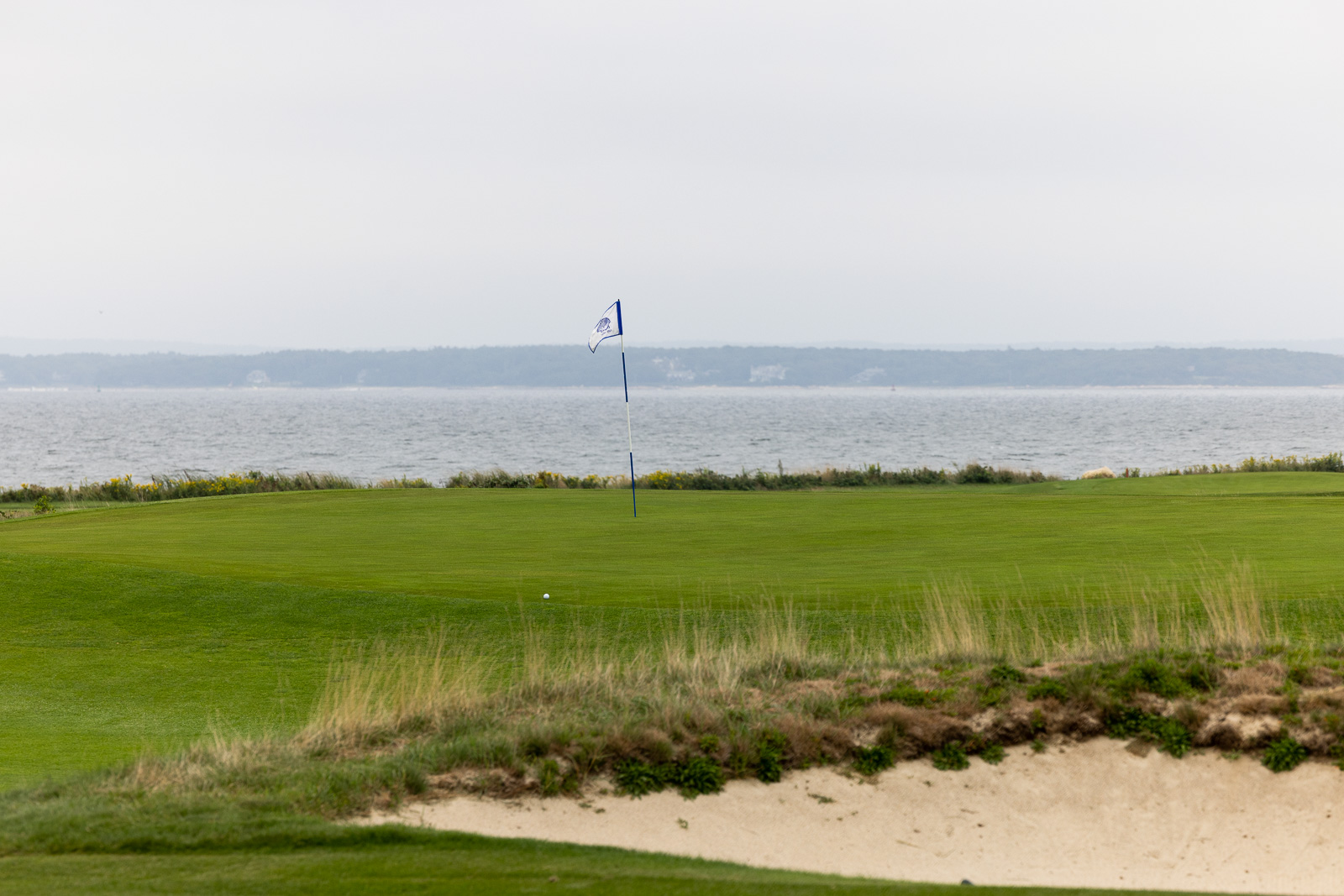
The setting of the clubhouse is top 10 among the courses I’ve visited in my travels.
It’s quaint, understated, and scenic.
We played at 2pm on a Monday afternoon the week after they aerated the course. The first tee time isn’t until 1 on Mondays, so the course and club was pretty quiet.
It was nice to have the extra time to wander around and soak in the setting.
The locker room is surprisingly small, but it fits the quaint atmosphere of the club.
For the 2022 season they expanded their outdoor bar, which is a fantastic place to have a drink and enjoy the view of both the course and the water.
It only took a minute, but from the moment I arrived, I knew I was going to like this place.
A Brief History of Kittansett Club
As I usually mention when writing about notable golden age courses, I can never do as good of a job recounting the history of the club, as they can. So check this out for a more detailed retelling of the history of Kittansett Club.
The name is interesting as it’s a combination of two Native American words meaning “near the sea.”
The Club was originally built by founding member Frederic C. Hood who had significant knowledge of other American and British courses of the era.
The club was established in 1922, and officially opened for play in 1923.
One thing I find most remarkable about the history of Kittansett is that as the decades wore on, the designer of the course was seemingly lost to time.
Yes, Mr. Hood helped build it, but it was unclear who did the initial plans.
The course was so well designed and there were so many well-executed strategic elements, that it seemed like there had to be additional help from someone who was more prominent during the era.
Sure enough, in the early 2000s plans for the course were found in William Flynn’s attic. (Credit to this SI article for additional details).
With his plans and knowledge, the club brought in famed architect Gil Hanse to restore the course to fit Mr. Flynn’s original designs.
This has led to significant changes in bunkering, and even more notably, the removal of hundreds of trees that have completely reshaped the look and feel of the course.
The course held the Walker Cup in 1953, and most recently held the US Senior Amateur in September 2022. I’m honestly surprised I was able to get out and see the course considering they’d just finished up the event.
The Course at Kittansett Club
Teeing off on the first hole gives you vibes similar to other old-school seaside courses like Fishers Island or Maidstone.
Granted each of these courses are quite different from one another, but the flat opening hole heading out away from the clubhouse reminded me of my experience at those other clubs.
At 450 yards from the tips, the opening at Kittansett is a stout par 4.
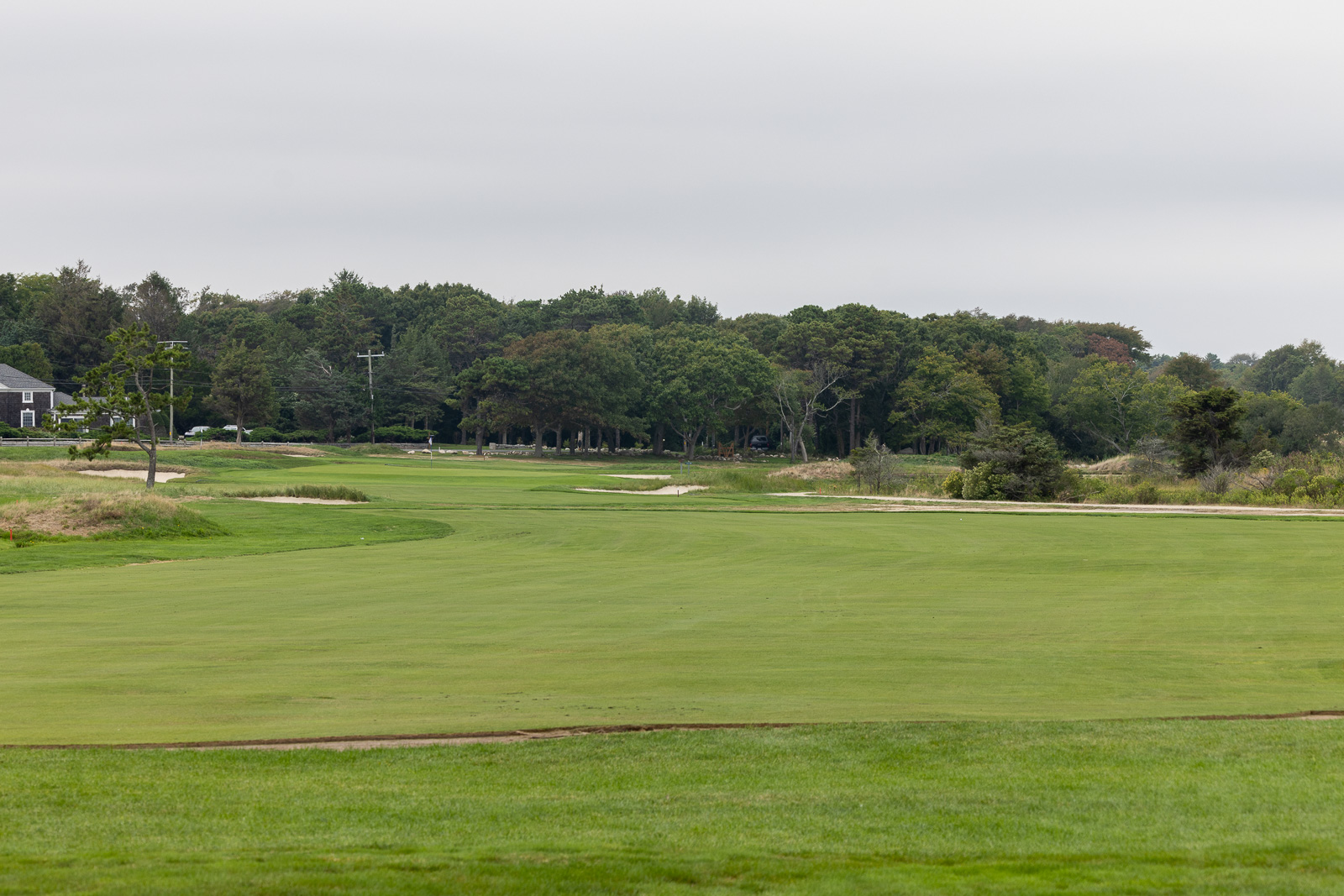
Being as exposed as it is, it’s clear much of the course’s defense can come from the elements.
There wasn’t a ton of weather the day we played, but the wind shifted halfway through our round, forcing us to play into it pretty much all day.
I can’t imagine what it would be like if the breeze was up even more.
The opening holes provide wide fairways with generous landing areas. But fescue in the rough, some fairway mounding, and bunkers can still punish shots that aren’t well placed – you especially notice this on the par 4, 2nd.
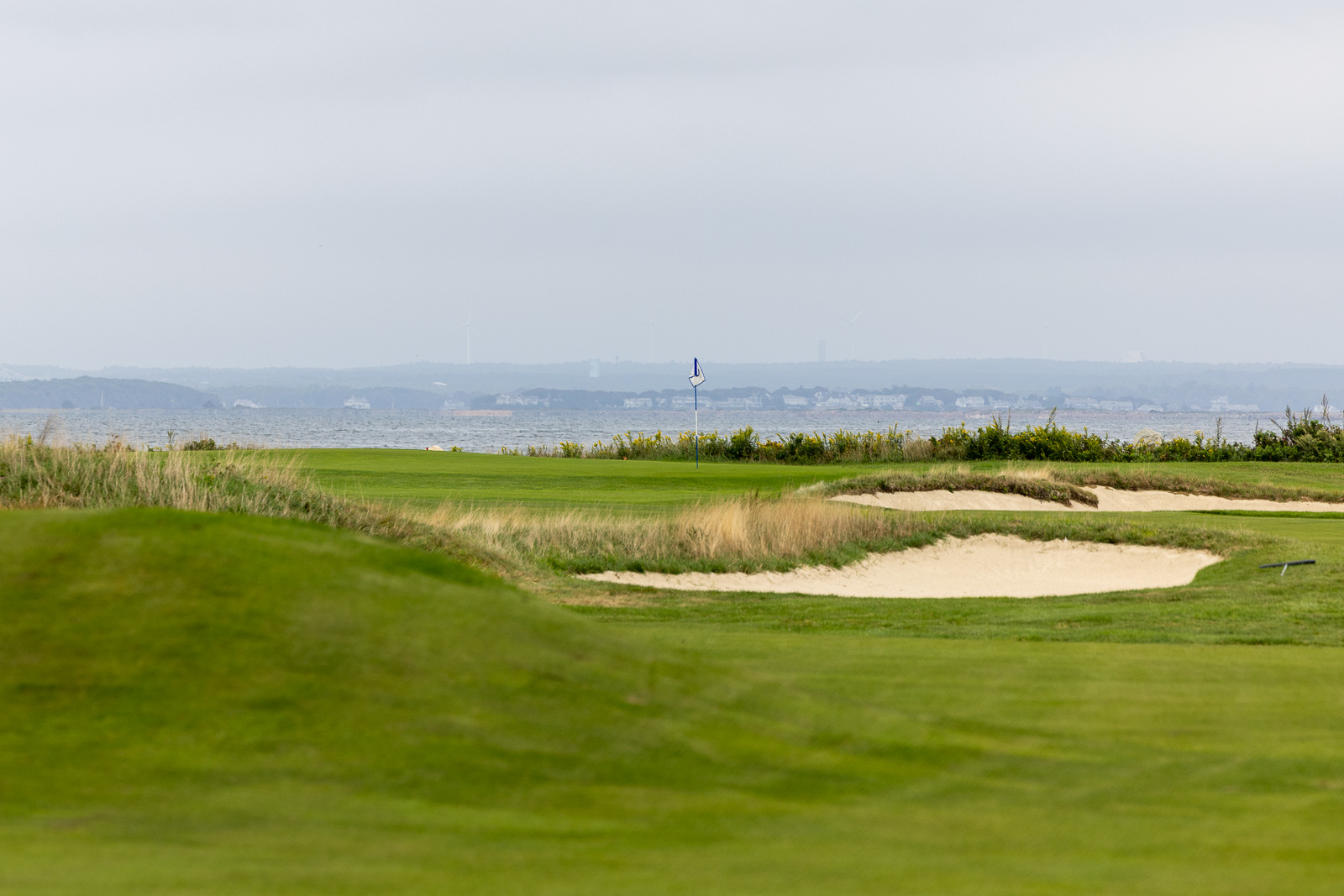
The 3rd Hole at Kittansett Club
The most famous hole at Kittansett comes early in the round in the form of the 167-yard par 3, 3rd hole.
It’s an island green, but instead of being surrounded by water, it’s completely surrounded by a bunker.
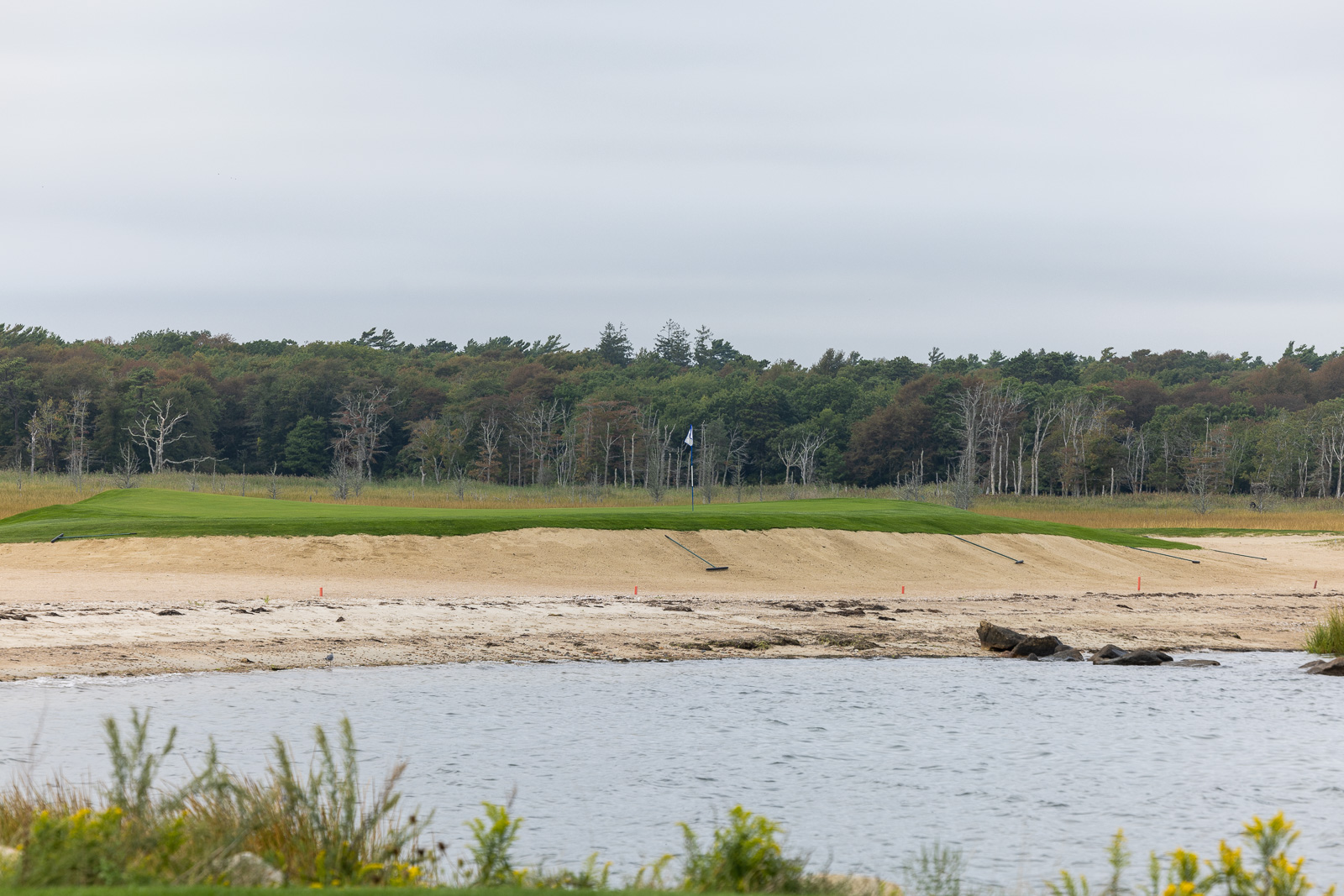
The green itself sits about 4-5 feet above the bunker, and the water from the cove comes in on the right-hand side. So if the sand isn’t scary enough, a sliced shot can certainly still find the water.
The railroad tie path through the bunker to the green is a cool aesthetic touch and adds to the interest of the experience.
It’s a fun all-or-nothing hole, and is certainly one of the highlights of the round.
For me, it ended up being the highlight of my entire Boston trip.
I hit my tee shot to 8 feet and drained the putt for my only birdie in 3 days.
The Front 9 at Kittansett Club
Holes 3 through 8 is my personal favorite stretch of holes on the course.
The 4th hole is a dogleg left that gives you lots of options off the tee. Too long and you’re in the bunkers across the fairway.
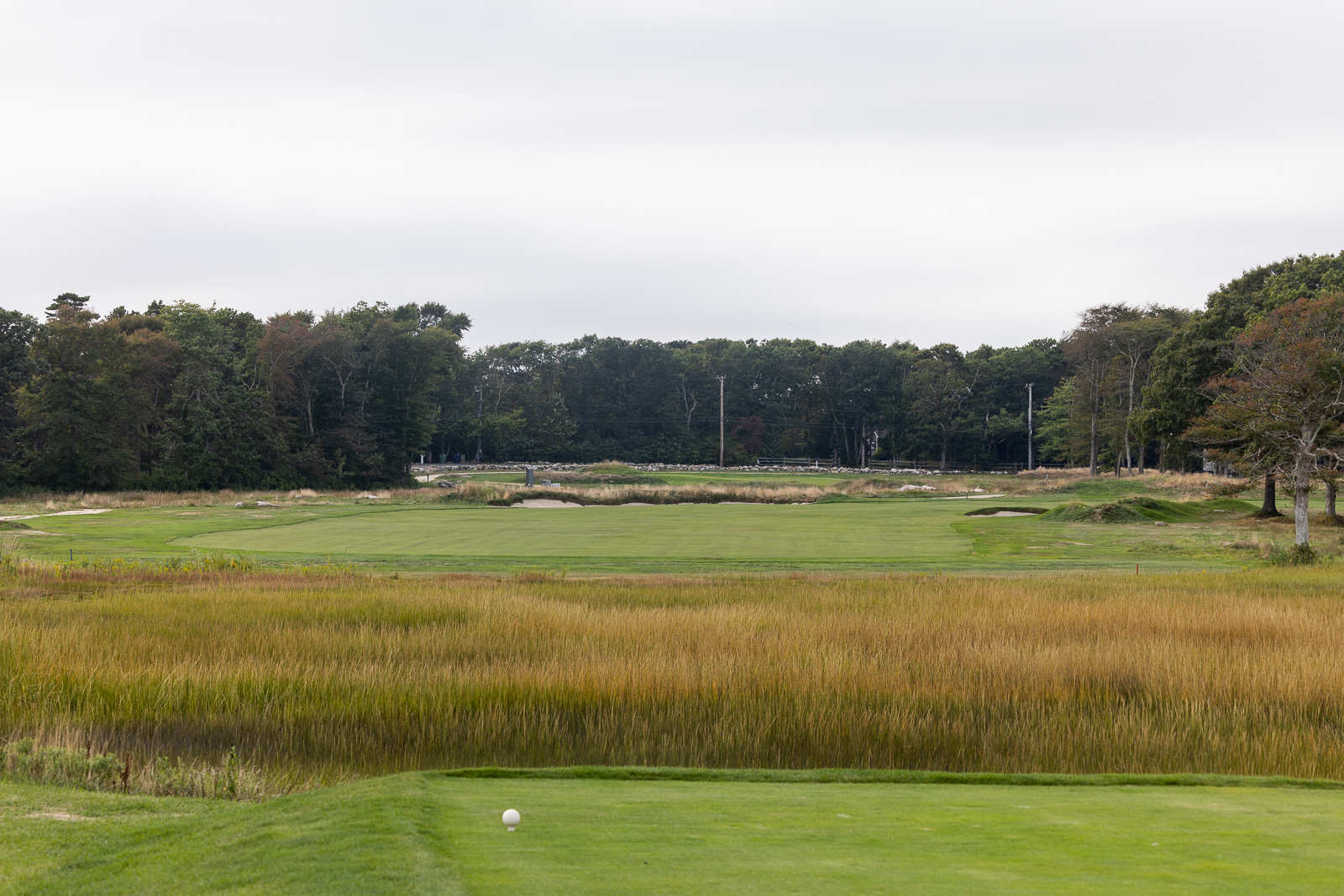
Big hitter? Try and clear the bunker on the corner and take on the trees.
The tee shot on the par 4, 5th is one of the most intimidating on the course with two big bunkers in the middle of the fairway to contend with and wetlands all down the right. Playing from the whites, most golfers should have no trouble clearing the center-line bunkers, but they certainly make you second-guess your line.
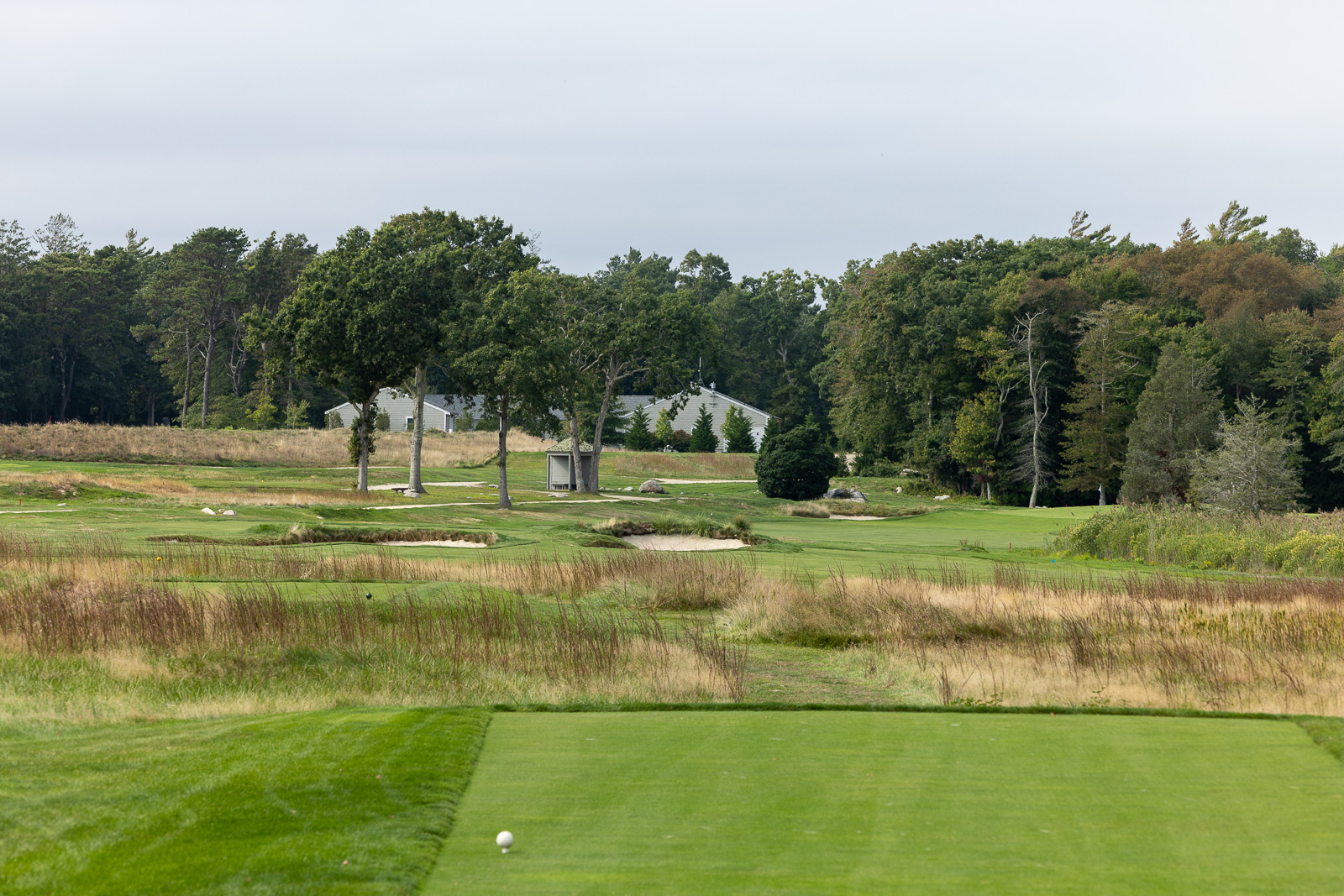
The 6th plays out towards the water and has a sign off the green designating the high water level from previous hurricanes.
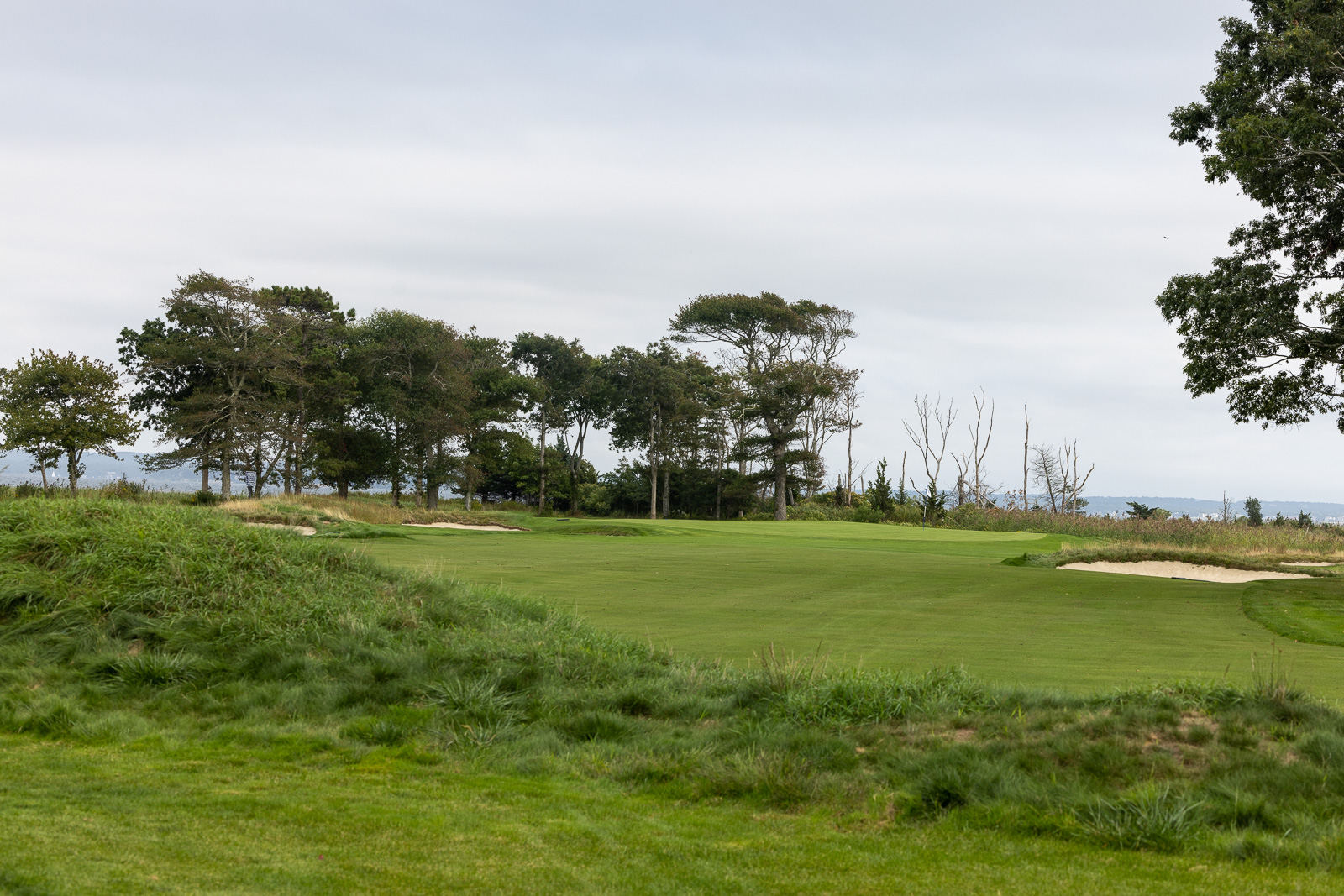
Hard to believe this green would have sitting under 8 feet of water at one point.
The 7th is one of three par 5s on the course, and the bunkering on this hole I found to be notable and forces you to really place your 3 shots well.
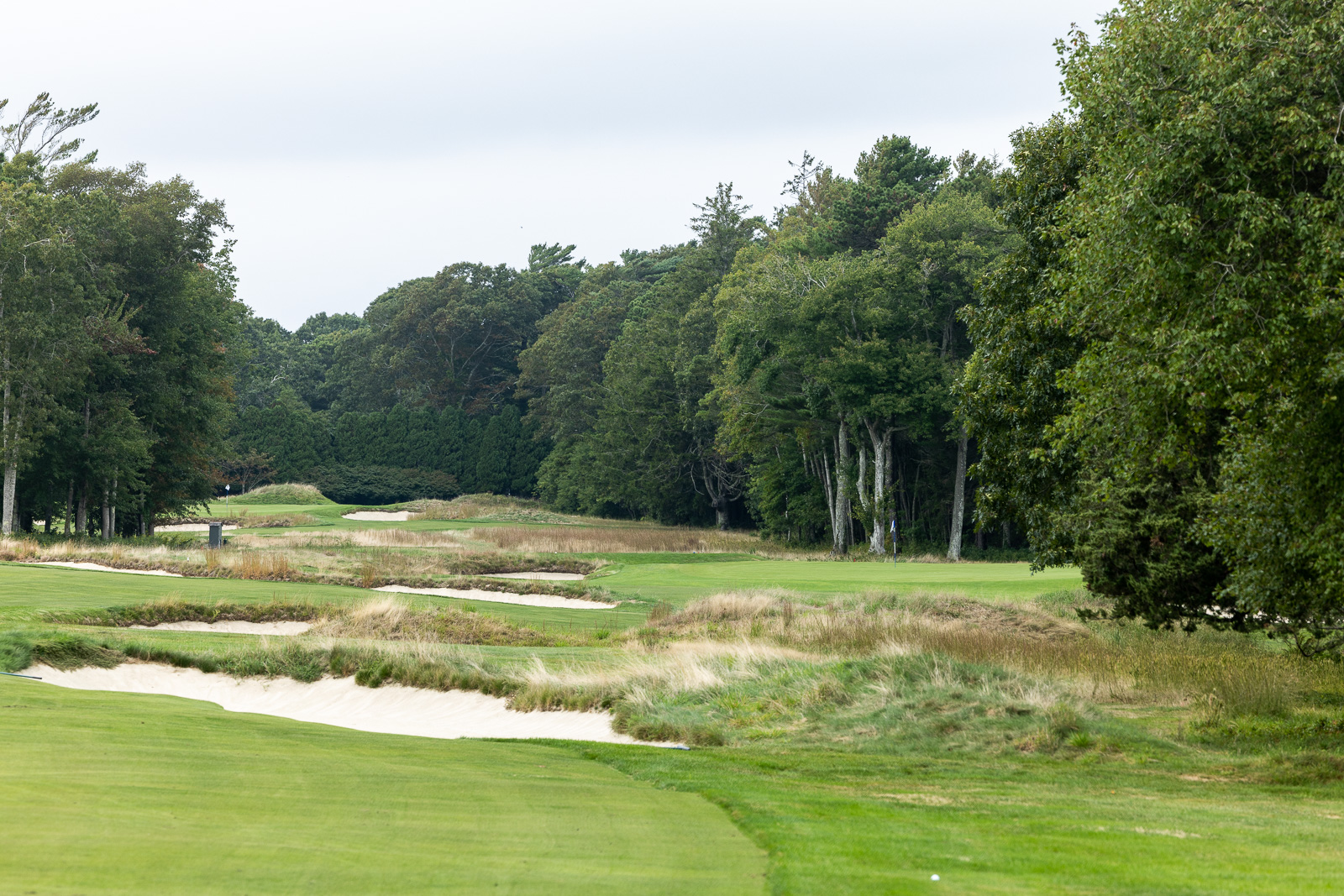
8 is a fantastic par 3 with an interesting green, nice mounding in the rear, and bunkers directly in front of and to the right of the green.
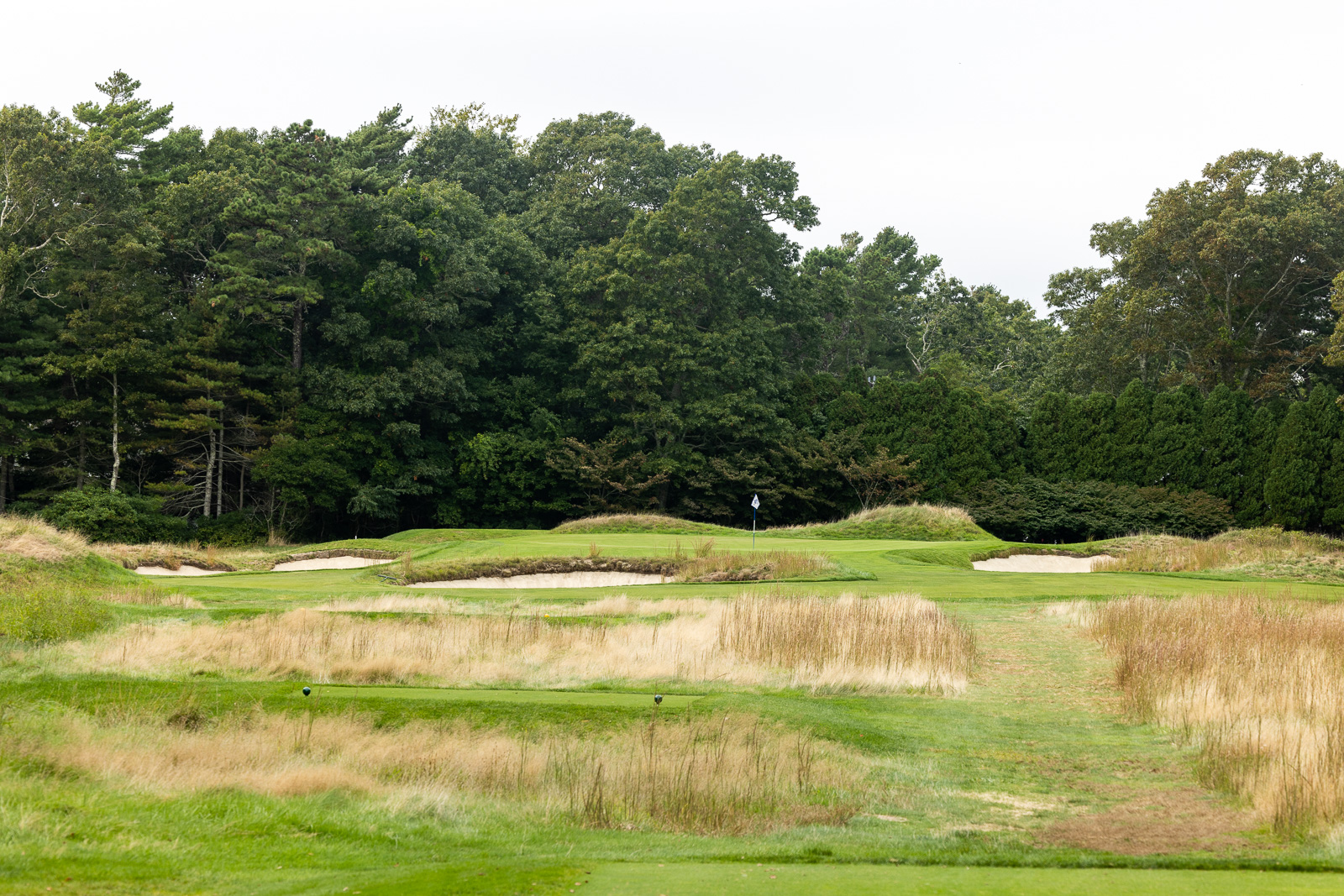
At Kittansett fescue grass can frame a lot of the features well, and this hole is an excellent example of it.
The Back 9 at Kittansett Club
Before coming to Kittansett, I was expecting the course to be much more open than it is.
After the third hole, most of the course is actually tucked back away from the water.
I’ve heard that before the trees were removed you could be standing on 16 and 17, which come back towards the water on 3, and you wouldn’t even be able to see the bay.
That’s absolutely wild to think about, and it makes you glad the membership voted to take a chance and go ahead with the removal.
10 shows off more interesting mounding which is a theme throughout the course. In some areas it’s more subtle (like on the 2nd fairway for instance.) In other cases, it’s much more prominent, as you’ll find on 10. It makes for an interesting choice off the tee.
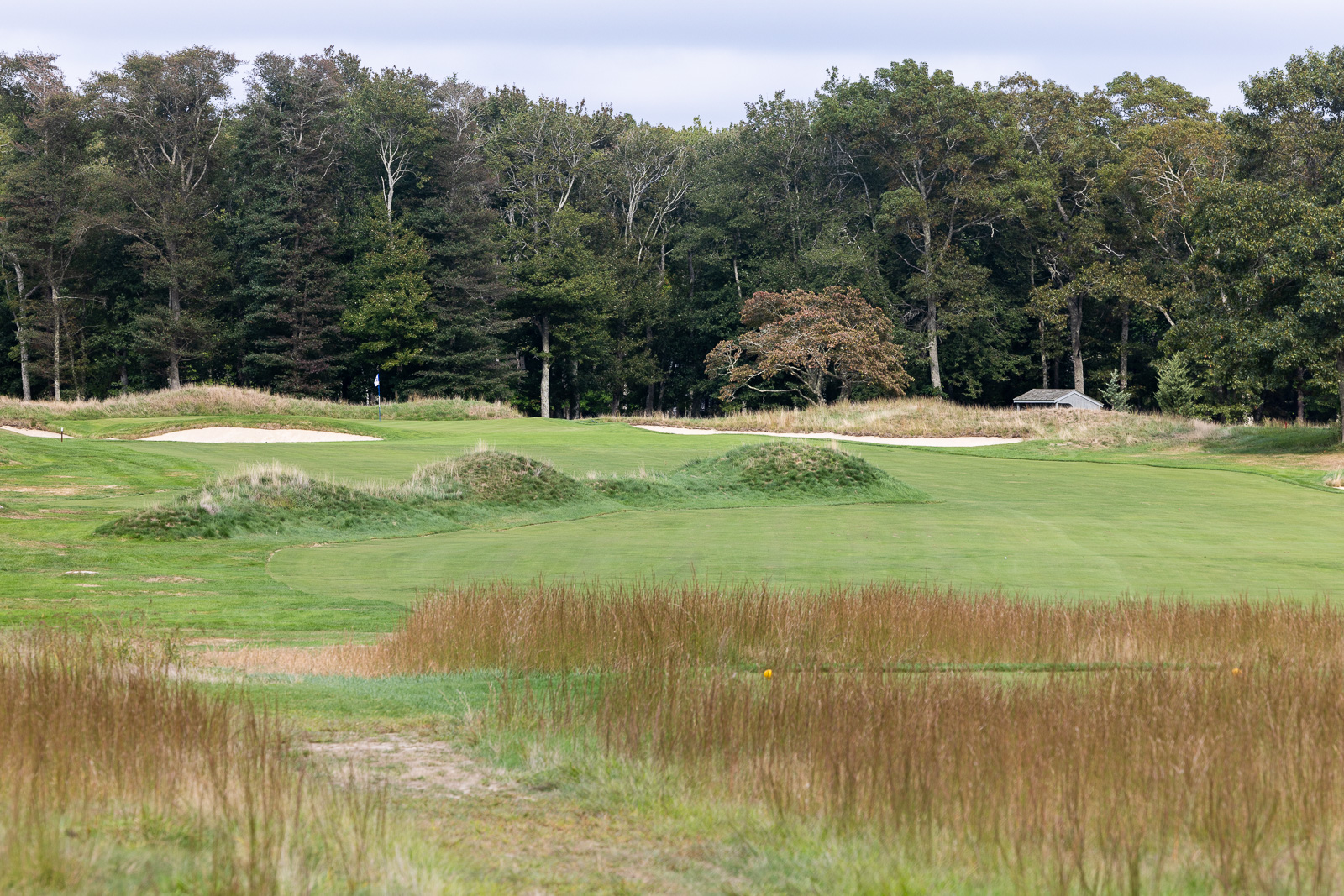
Go further to the right and you’ll have the best angle in towards the green, but be more likely to catch the 3rd mound.
When we got to the par 3 11th, all we could say was “what??”
The wind had shifted, so while we thought we’d be heading back towards the clubhouse with the wind at our back – that wasn’t the case.
So now we were faced with a 23o yard tee shot into the wind, with a very tricky green.
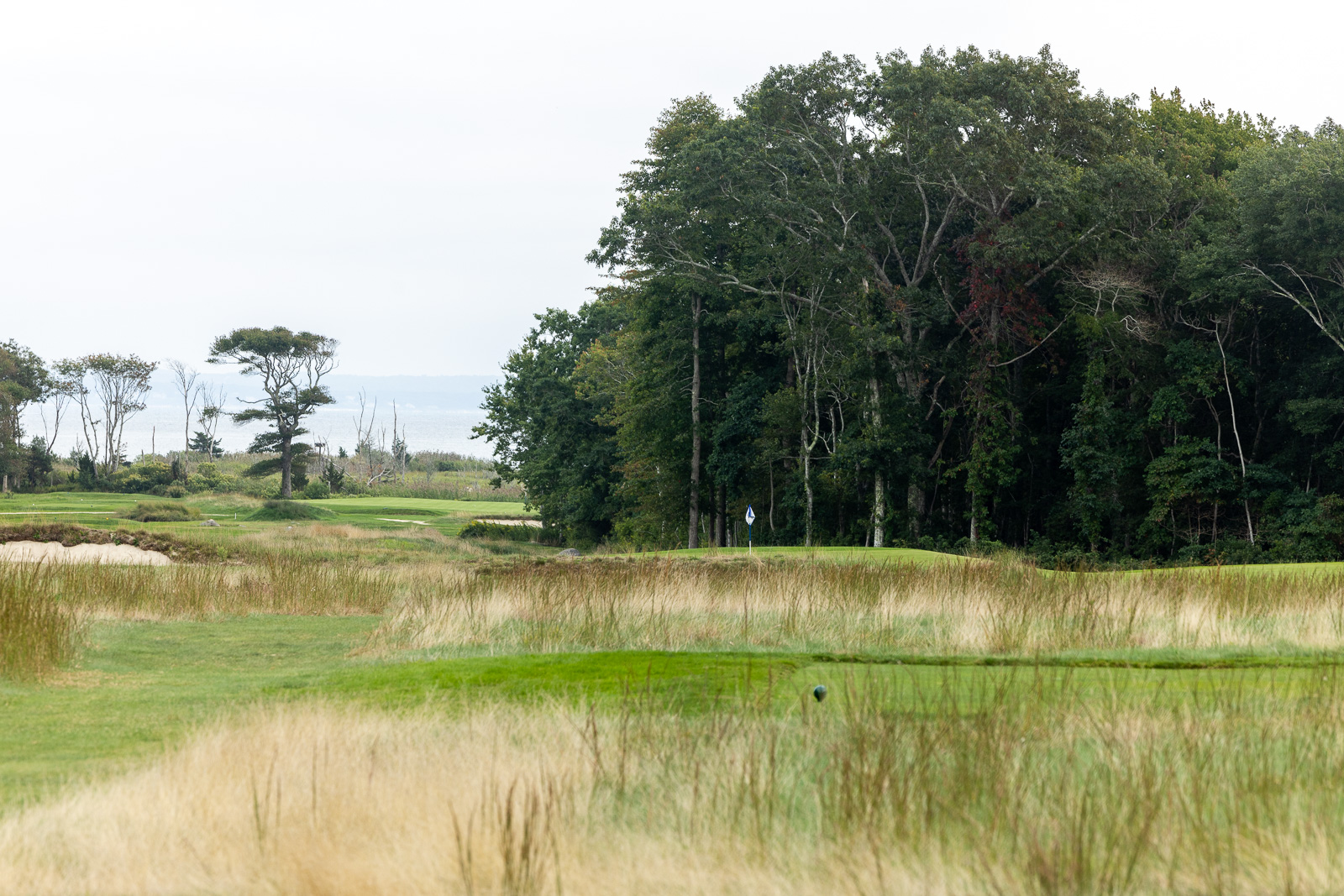
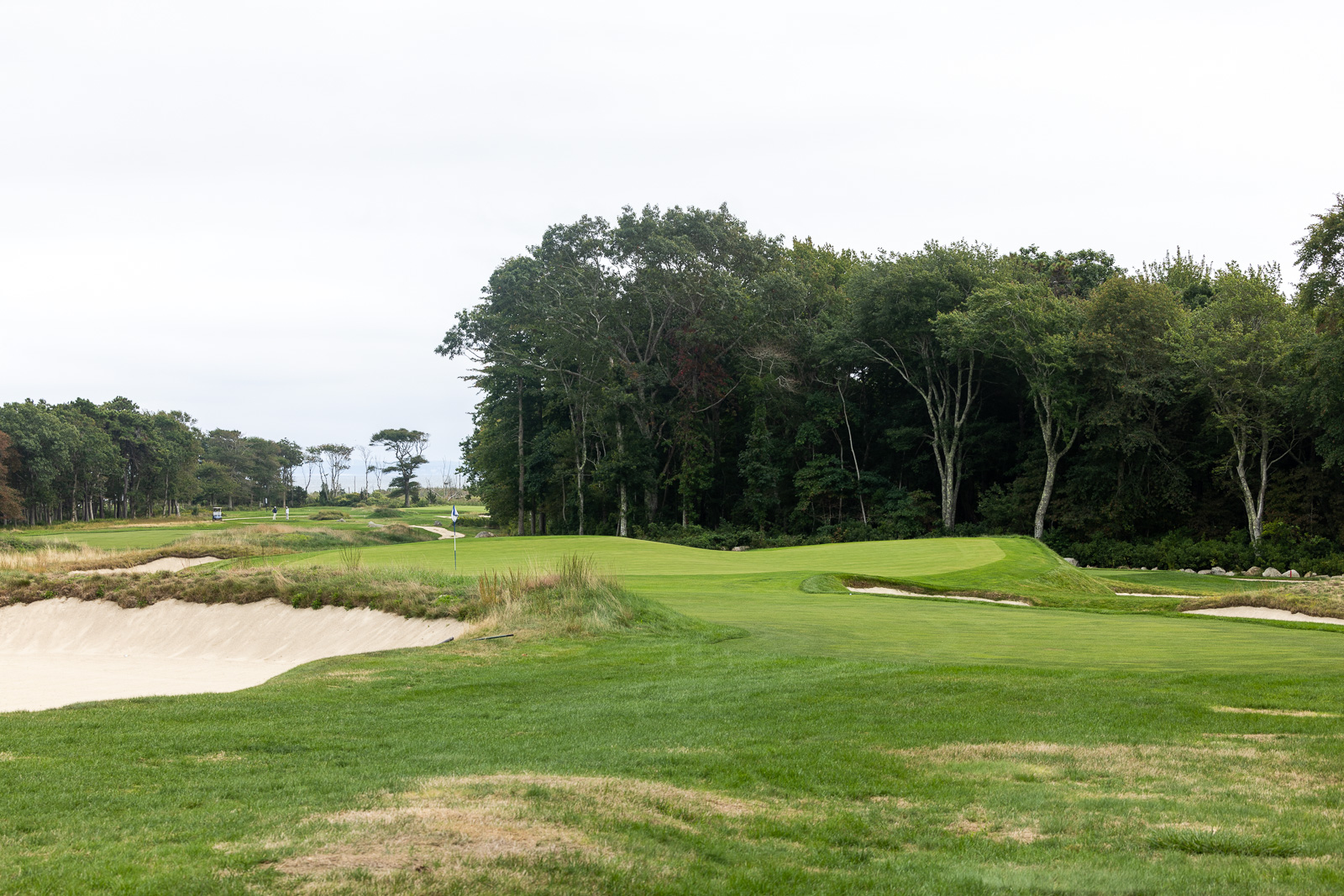
For as challenging as this hole is, the green complex is one of the most interesting on the course. It’s a severely sloped back-to-front green with a bit of a swale in the middle separating it into two sections.
The bunkers on the right are among the deepest on the course.
12 is a fantastic hole that is simply not one that favors my game.
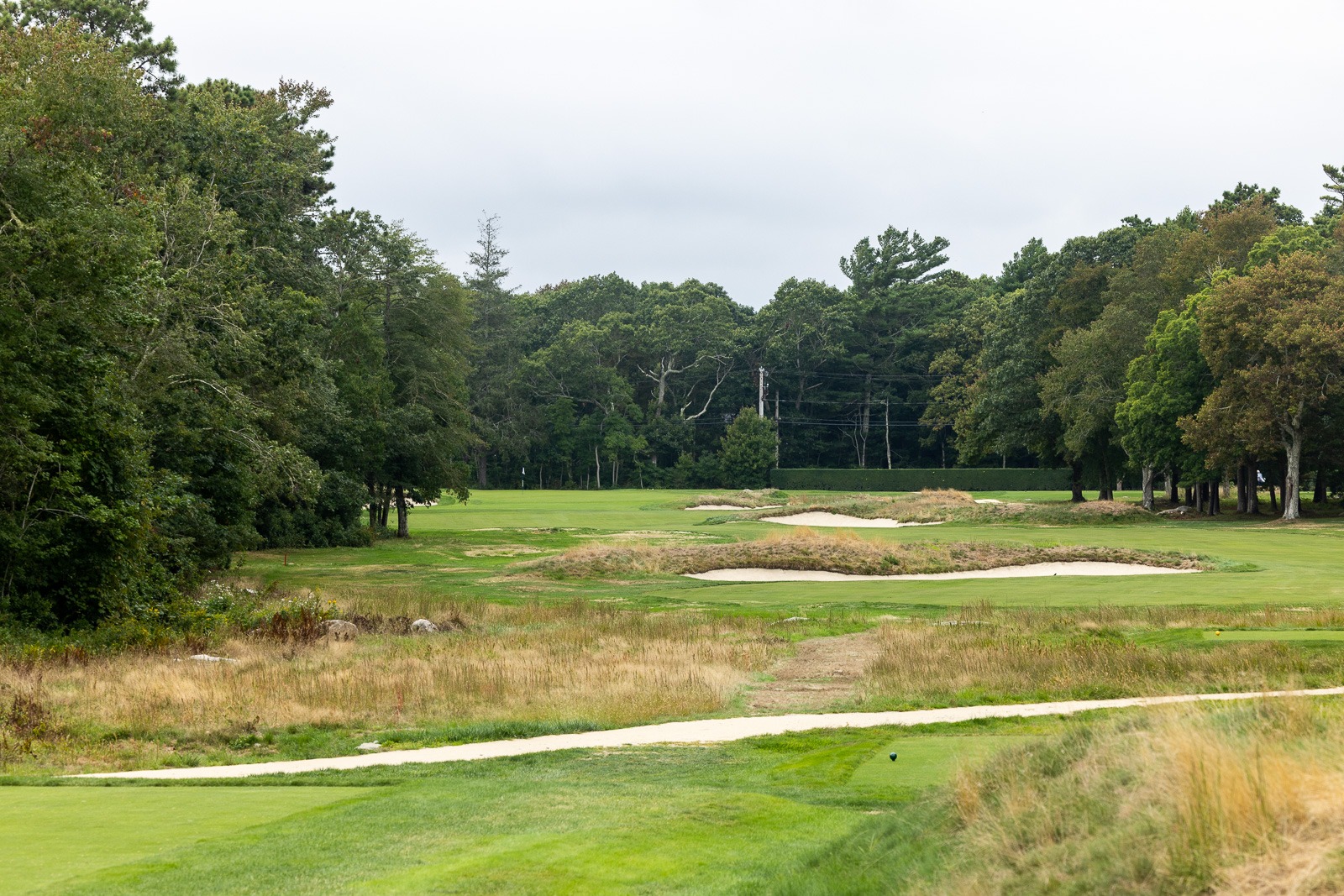
With the tee box on the left, and also being a dogleg left, it’s already a very tricky hole for anyone who plays a fade, or in my case, hard slice.
Add in a cross bunker about 200 yards out (that shouldn’t come into play), and another bunker through the fairway on the same line (which also likely won’t come into play), and you get a very challenging tee shot visually.
Kittansett Club has great variety in its routing. Despite being a mostly out-and-back course, it weaves in a nice selection of doglegs in both directions with straight holes as well, and you see this throughout the back 9.
The 15th is the second of the trio of par 5s on the course.
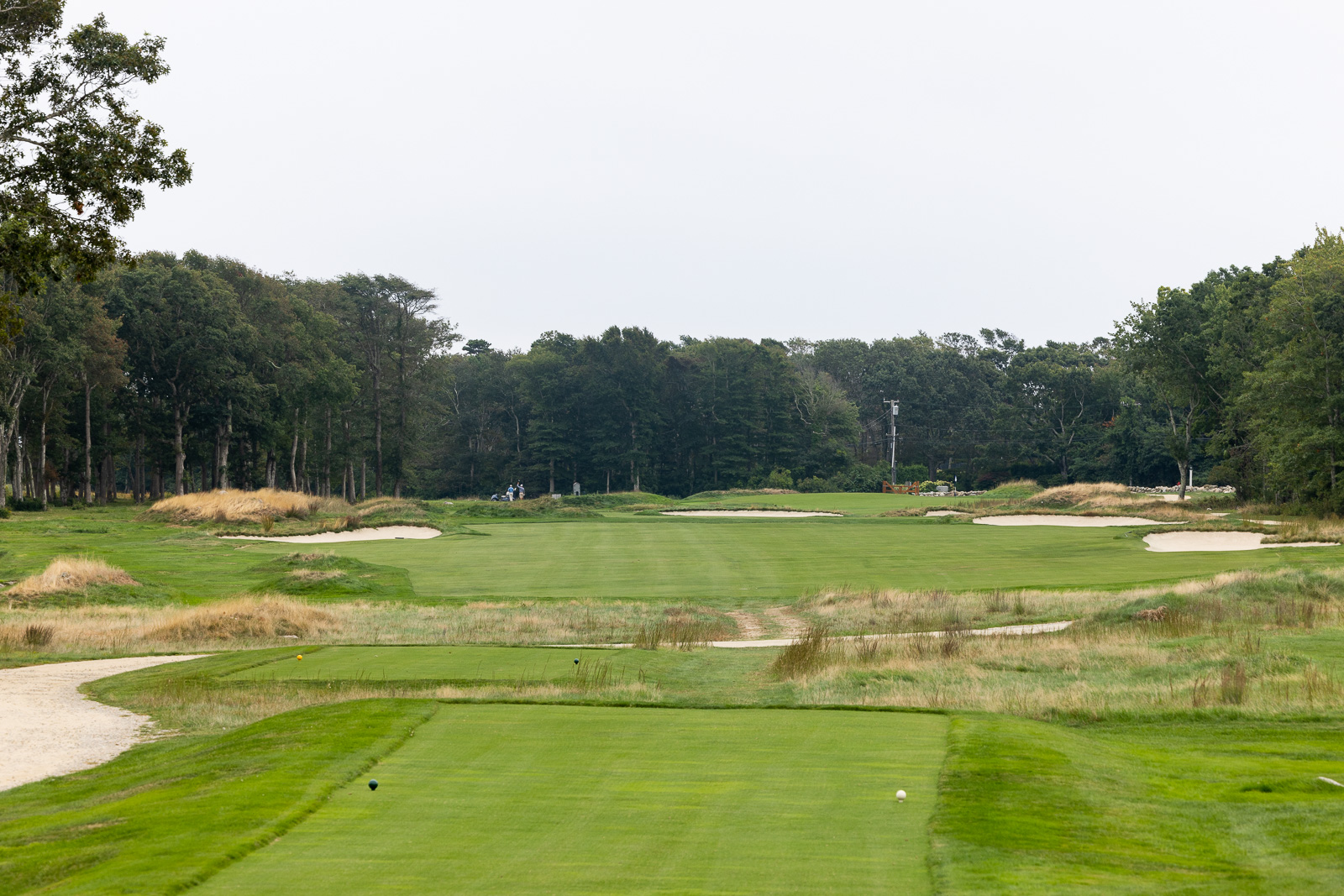
When you hit 16, you’re brought back out of the trees to finish the course in the open.
As I mentioned, I expected the whole course to be like this, but I enjoyed the changing environment throughout which weaves from open seaside, into the coastal forest, and back out again to finish the round.
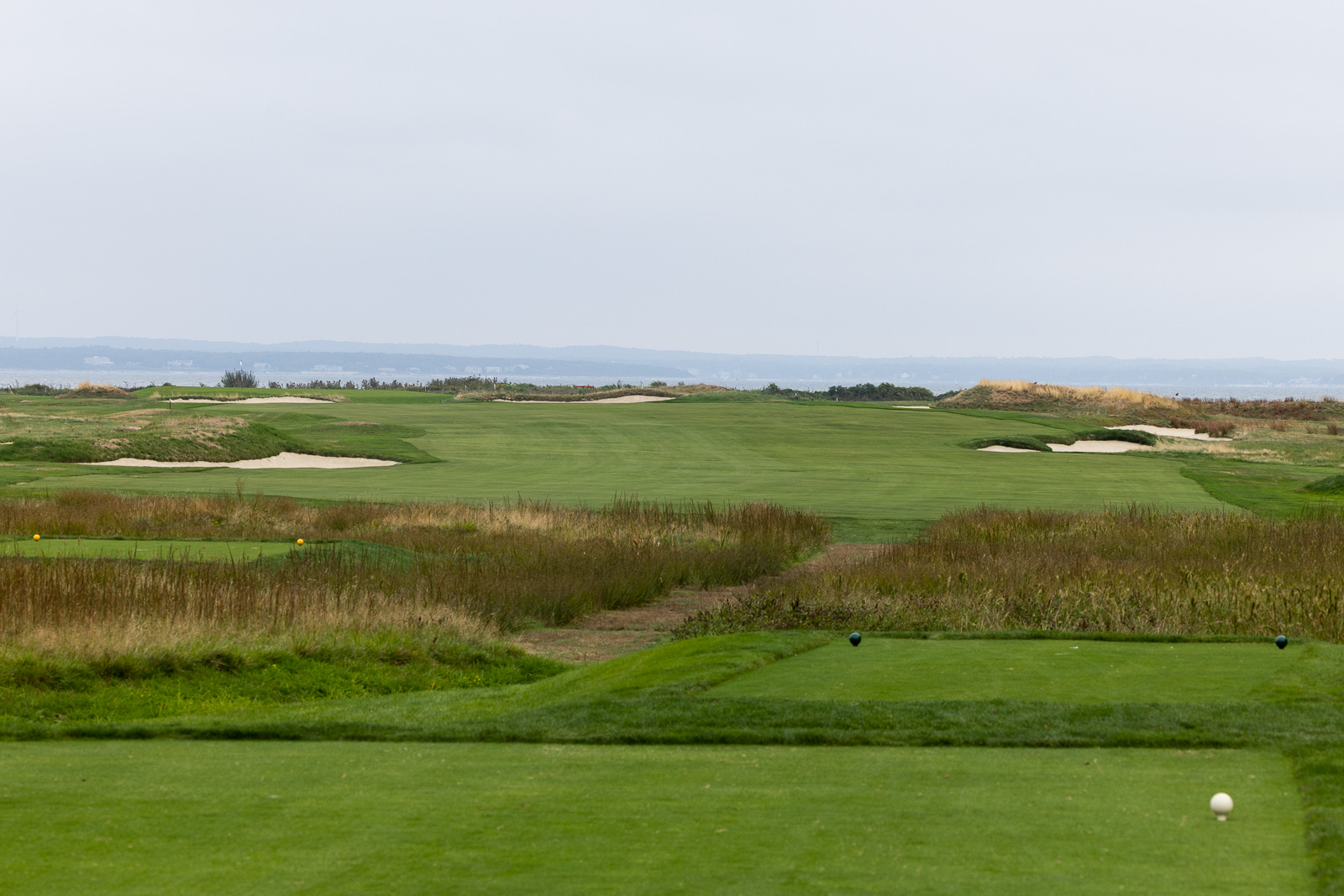
It makes for an extra special moment on 16 when you come out of the trees and out towards the water and the 3rd hole. Once again, I can’t imagine what this looked like before the tree removal, and at least from my perspective, it seems like this is a big improvement.
17 is a visually tricky hole, as from the tee it can be tough to know exactly where you’re going. And there’s a good chance driver will be too much and take you through the fairway.
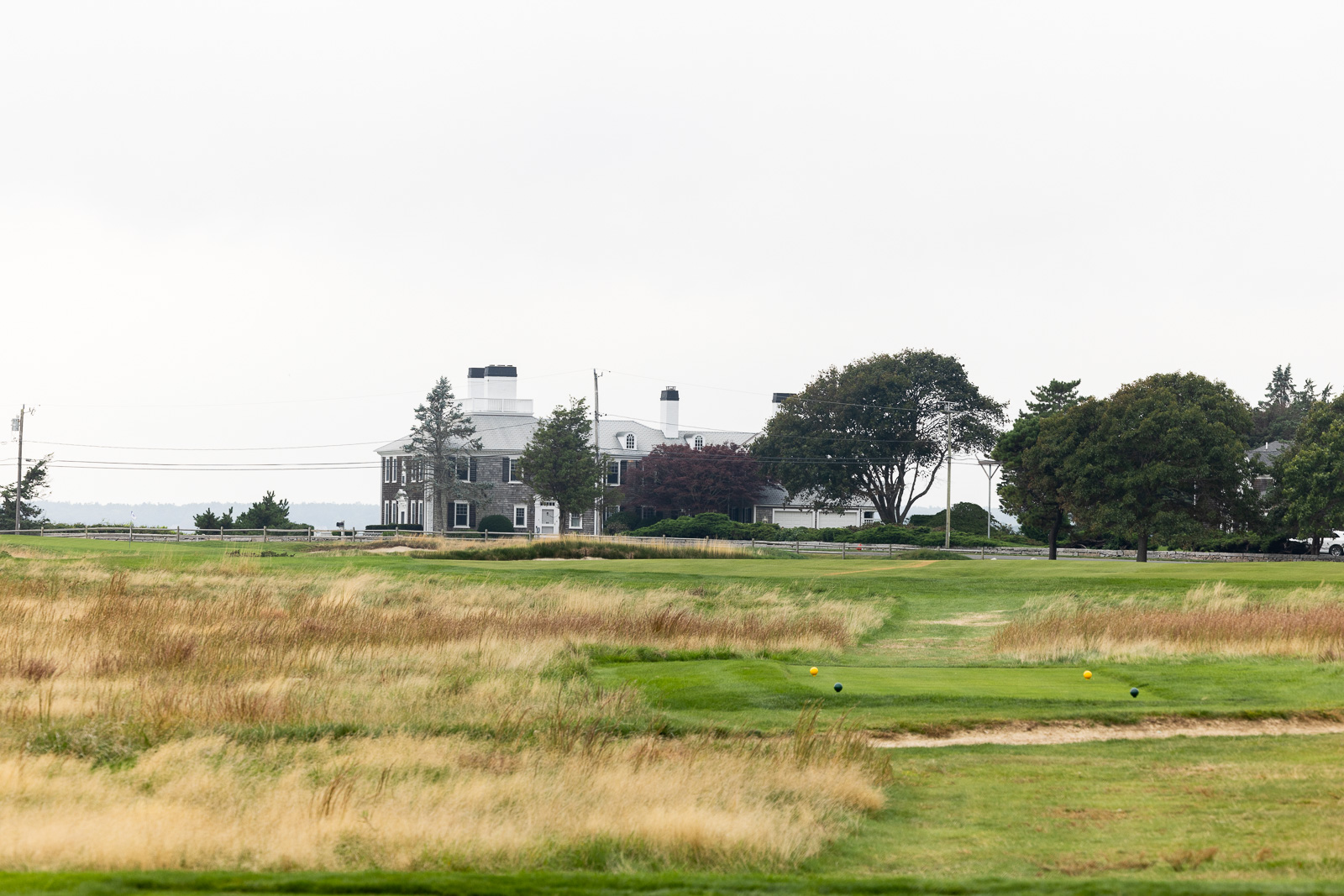
18 brings you back to the clubhouse, and again throws off vibes of the opening and finishing holes at Maidstone and Fishers Island. It’s a very nice setting with the clubhouse off to the left, and is the shortest of the par 5s at Kittansett.
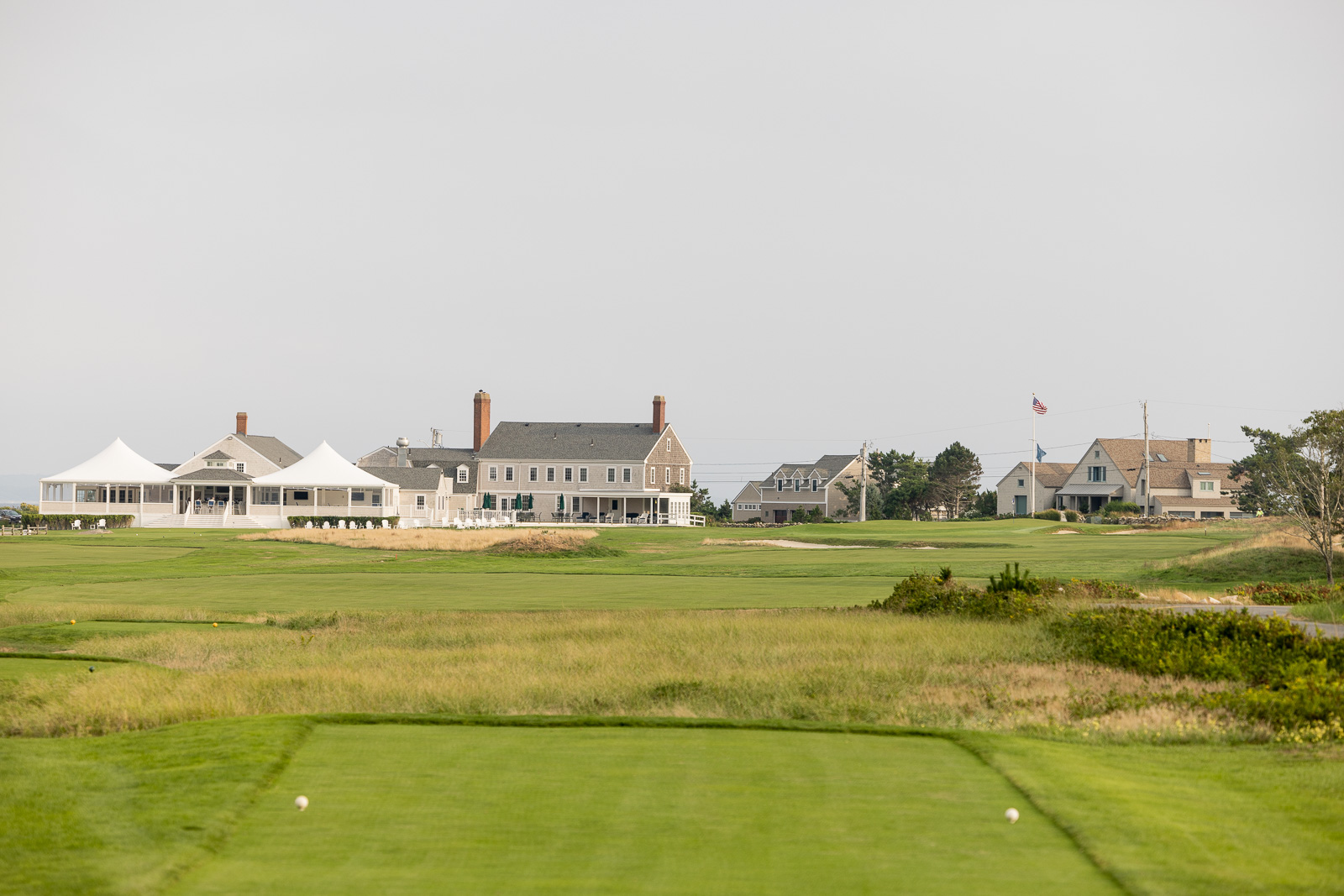
Final Thoughts on Kittansett Club
The setting of Kittansett is phenomenal. It feels quaint, subdued, and local – in a good way.
Because Kittansett is a golf club you’re not going to find a pool, tennis, or all of the other amenities that you’ll typically find at a country club.
This keeps the vibe more chill and low-key, and really allows you to soak in the wonderful setting on the Bay.
It’s easy to see why the course is consistently rated among the best in the country. There are a number of very good golf holes with interesting routing, and a beautiful setting.
Kittansett has a lot of subtlety to it, and I imagine with more plays I’d grow to appreciate it even more.
I can only hope one day I’ll have the opportunity to return and experience it again. It’s a special place, and one its members are extremely lucky to be a part of.

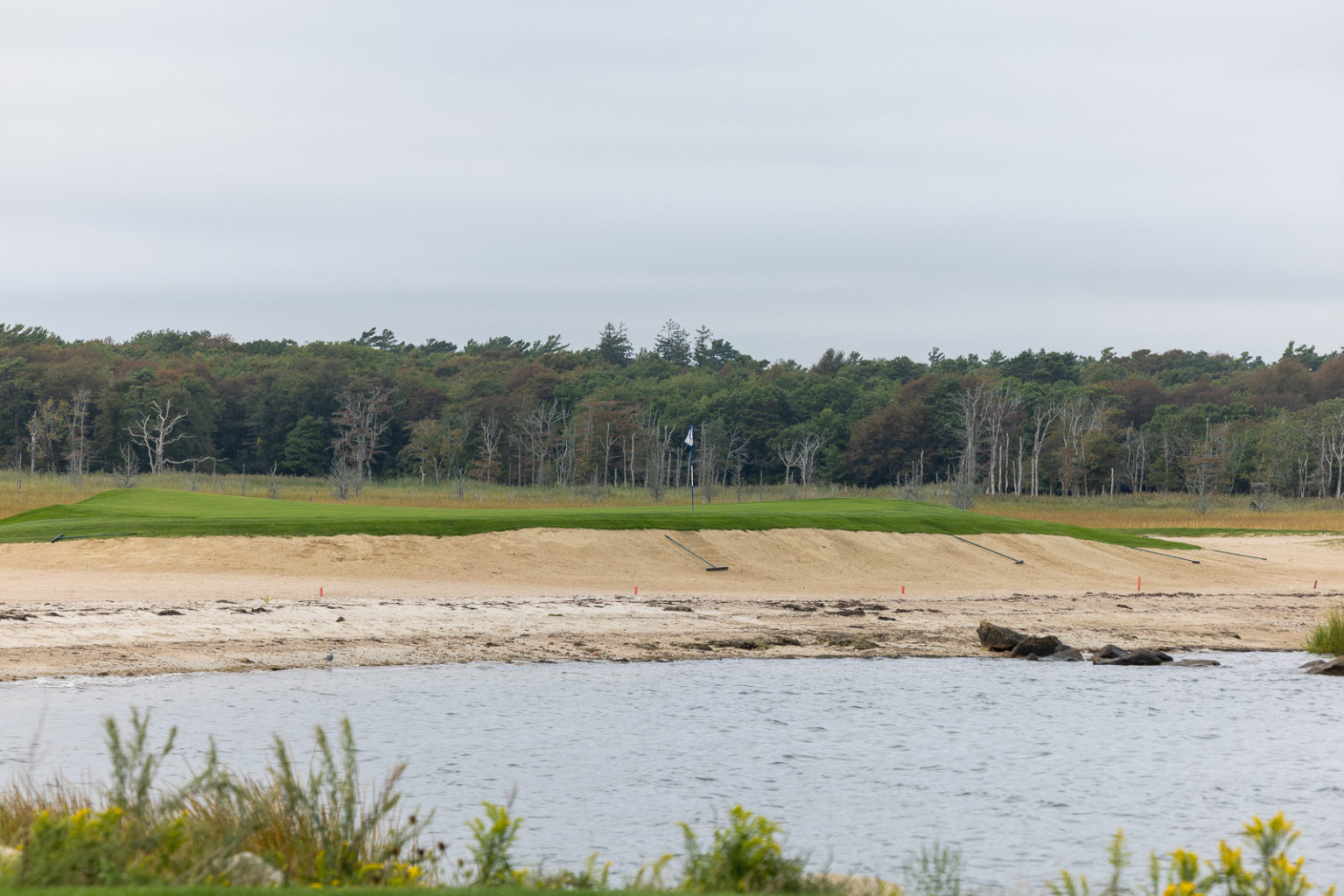
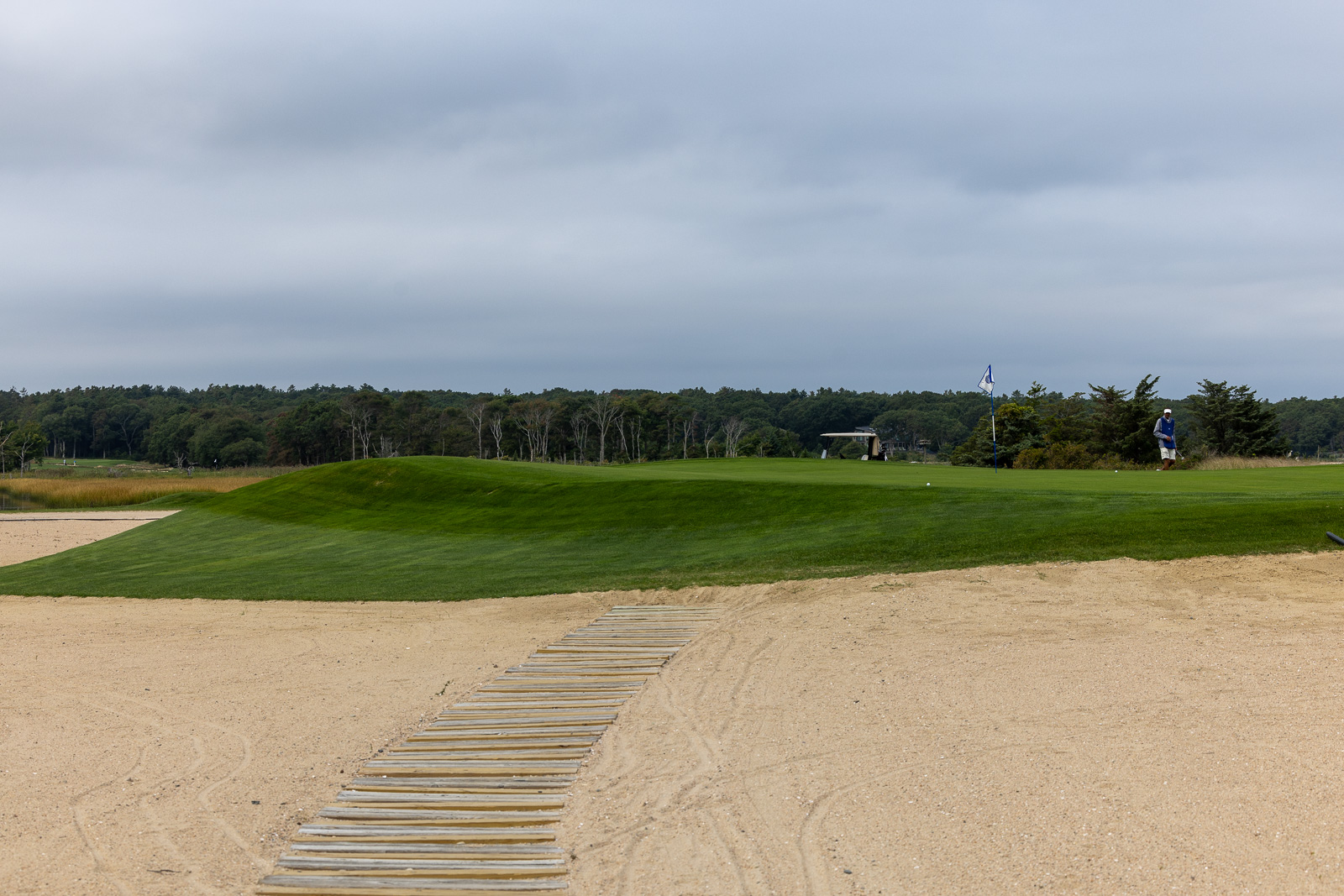
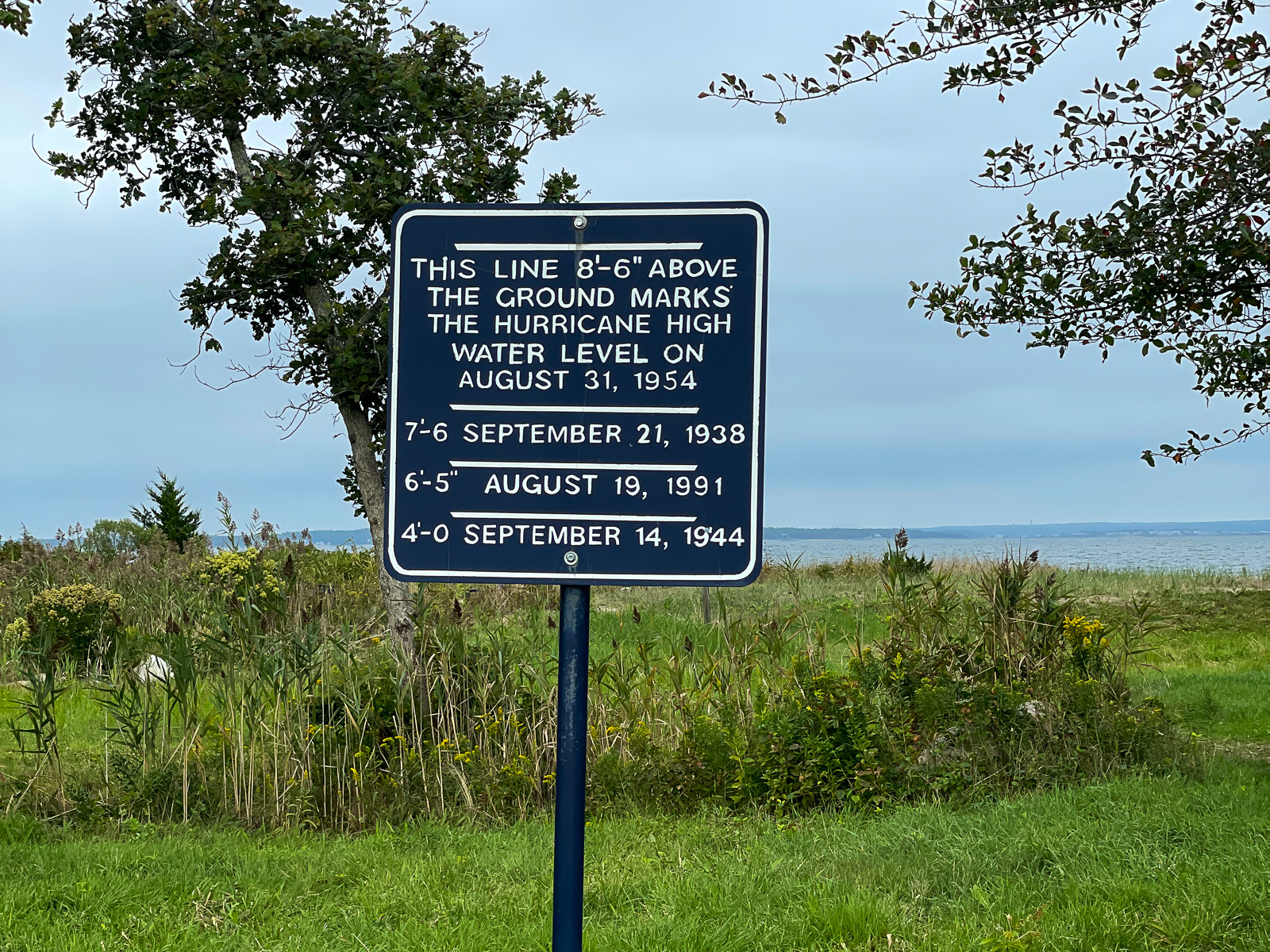
1 Comment
Sean, great article! So my good friend joined The Kittansett Club this year and I’ve been lucky enough to play about a dozen rounds there. During their annual 4-Ball Tournament I got my first hole-in-one on #3. Anytime you want to come back I can absolutely get you back out there, (he’s a really good friend) just let me know. I love your content (just found you on YouTube) and wish you the best. Keep it up!
Matt